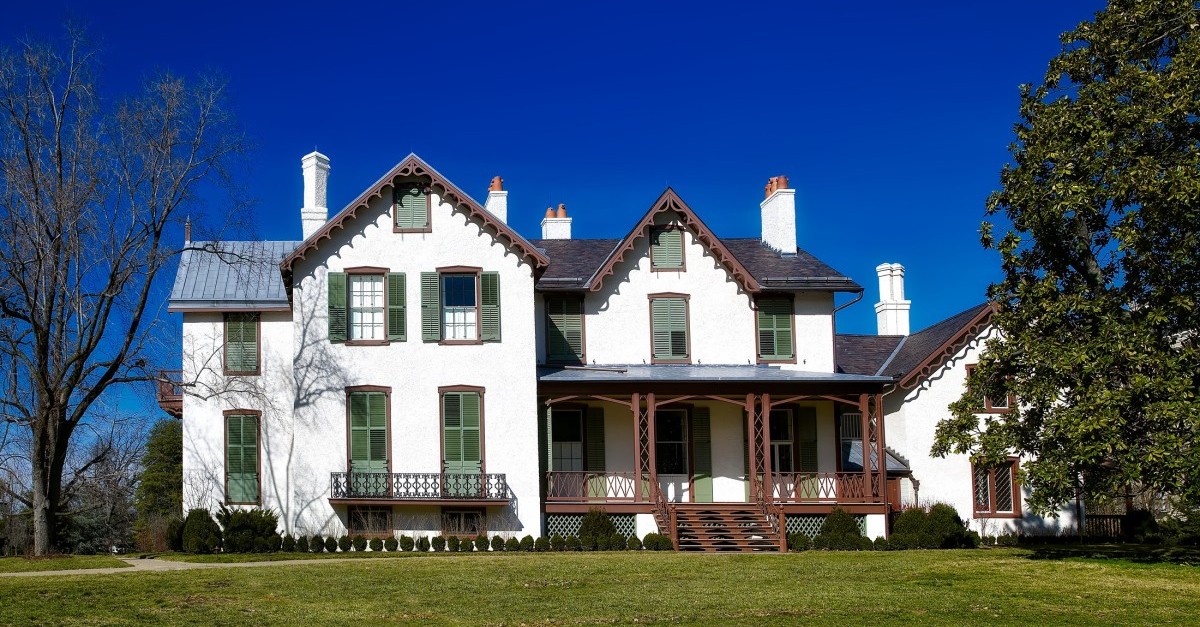What is the perfect investment property? For some, it is an out-of-date single family home that needs a few updates and cosmetic enhancements before listing the property for sale. For others, it can be a multi-family rental property used as an additional source of income. But, for a number of investors, the perfect property is a historic home that’s been sitting for decades, waiting for the day when someone finally comes along to bring it back to its original glory. Generally, for a property to be considered historic, it must be at least a certain age, usually fifty years old. But, age alone doesn’t make a home historic. What makes a home historic is often its architecture or its significance to the culture or community.
Restore Or Rehab? What’s The Difference?
Owning a historic home brings with it a unique set of questions, decisions and goals. One of the key questions a historic homeowner must ask themselves is whether to restore or rehab the property. This decision will greatly influence the home’s ultimate character as well as the projected cost and time needed to complete this particular project. Before you decide which route is best for you and your property, you must be fully aware of the difference between the two.
Restoring a home means that you are bringing back the interior and exterior of the property to its original form or appearance, which is often to that of a particular time period. When it comes to certain homes with historical significance, or even those in a designated historic district, there are likely strict guidelines as to which restorations can actually be made, and how. When restoring or preserving a home back to its original appearance, only changes that are relevant to the property’s history and time period are permissible; this can include anything from paint colors to window trimmings. Reach out to your specific town’s historic preservation societies in regards to the steps you should take to complete your restoration. Most times, they will be able to connect you with experienced contractors and other service providers who have worked on historical restorations in the area already and would make a great addition to your team.
Rehabilitating or “rehabbing” a home, on the other hand, simply means you are renovating the property to make it practical for modern-day living. While you may plan to preserve significant historical and architectural attributes, a rehab often involves installing up to date appliances, heating and cooling systems, and other technological advances that may not have been around when the home was originally constructed.
Decided To Restore? Here Are Some Tips!
Before moving forward with the restoration, get to know your property! Study the history of this one-of-a-kind home, get to know its story! Investigate! There are many ways to find information on your property. First, you can start by speaking with neighbors who have been residents of the neighborhood for a lifetime – they or their family may know about the former owners of your home and may even have personal memories or photographs of the property from long ago. If this doesn’t work, you can always read up on your property’s history by searching public records and information on former owners. Once you know your property, it will be much easier for you to restore it back to its original form.
Before you make any moves, be sure to study and evaluate the craftsmanship of the home. Figure out which materials were used, and pay close attention to the intricacies of the property. Try to stay true to the time period when restoring this property. It may be difficult for you to figure out which colors, materials and textures must be used to bring this home back to its original standing. If possible, find a contractor who specializes in historic restorations to assist you with putting all the pieces of the puzzle together. It may become a little pricey when adding all the finishing touches, but it will be well worth it in the end!
It may seem impossible to restore your historic property without adding any modern upgrades, and if this is the case for your particular project, proceed with caution. The key to a successful restoration isn’t to not include any modern updates, but to incorporate them in a discrete manner. Keep the “technological advancements” to a minimum, and be sure each upgrade coincides with the property’s style and design. Historically significant features are what gives the home it’s charm; try your best not to modify these timeless details, emphasize them instead! Separating the original features from each modern addition will help you to embrace the history and character of the property completely!
What A Historic Restoration Means Financially.
When it comes to historic properties, be aware of the finances involved. Often times, the purchase price of the property is relatively cheap. This is because so many historic properties need a great deal of work to bring the home back to its original state. There aren’t many homeowners who are willing to take on that risk, but for those that are, jumping at the low-priced property can be well worth the effort.
To find out how much the property in question is actually worth, have it appraised by someone who is educated on properties like these. Pricing out your historic property isn’t as easy as matching it up with comparable properties in the area, because often times, there aren’t similar standing properties. Unless your property is located in a historic district with many similar homes, it will be difficult to find the comps you are looking for.
The cost of repairs and restoration for your historic home can run you far more than its purchase price, and insuring this type of property can cost almost double that of a traditional home. If you just recently purchased a historic home and are looking to begin the restoration process, you are in luck. There are many federal and state grant programs that were created for homeowners like you. A great place to start is the National Trust for Historic Preservation, and even your specific state’s Historic Preservation Office. If these options aren’t working for you, you can contact The U.S. Department of Housing and Urban Development, who offers a specialized mortgage for those who are willing to restore their historic property.
Restoring a historic property isn’t an easy task, but can be exceptionally rewarding. Historic homes connect us to our past and aide us to better understand our culture. The restoration of historic homes can help preserve history…and bring it back to life.







0 Comments
Trackbacks/Pingbacks